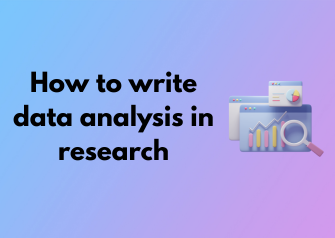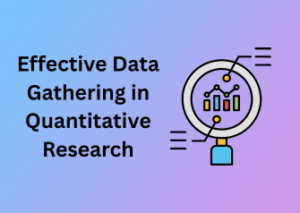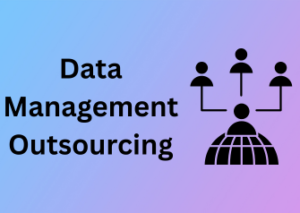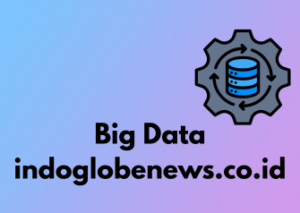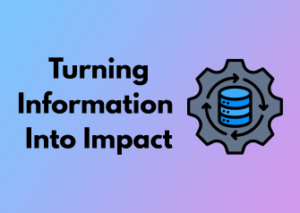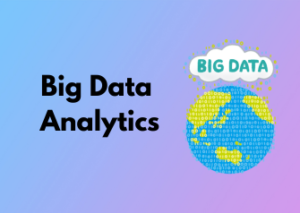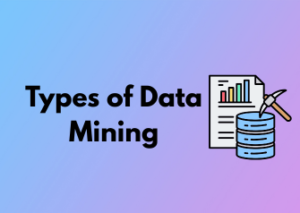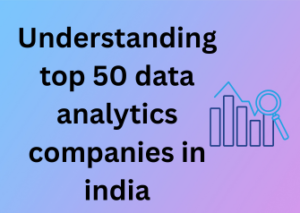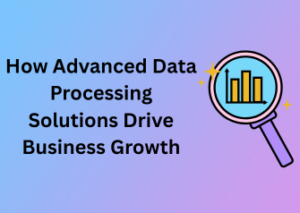When it comes to analyzing data for research, diving in without a clear plan is like going on a road trip without a map or GPS. It’s exciting, sure, but it might lead to unnecessary detours, confusion, or worse—getting completely lost. Crafting a meaningful strategy for data analysis is your first step, and trust me, it’s worth every ounce of effort. Let’s break this process down into manageable pieces!
Take a Moment to Define Your Goals
Before you even touch your data, take a step back and ask yourself a few key questions:
- What am I trying to find or understand? Clearly define the purpose of your research and what you hope the data will reveal.
- What type of data do I have? Is your data qualitative, quantitative, or a mix of both? This will influence your approach.
- What outcomes will this analysis support? Think about how this analysis contributes to your overall research goals or real-world applications.
It might sound basic, but clearly defining your objectives sets the stage for a smoother, more effective analysis. After all, fuzzy goals can lead to messy results—and nobody likes that!
Organize and Clean Your Data First
Sure, analyzing data might sound like the fun part, but if your data looks like a jumbled pile of unwashed laundry, you’re setting yourself up for a hard time. Data cleaning is an often overlooked step in research, yet it’s crucial for creating meaningful results. Here’s what good data preparation entails:
- Identify and fix errors: Look for missing values, duplicates, or entries that don’t make sense. A value for age saying “200 years”? Not likely—and definitely a red flag.
- Standardize the format: If your data comes from multiple sources, make sure it’s consistent. For example, are dates written as MM/DD/YYYY or DD/MM/YYYY? Little mismatches like these can cause chaos.
- Organize your data: Label, sort, and arrange your dataset so it’s easy to navigate. Trust me, future-you will thank you.
If you prepare your data carefully, the analysis becomes much faster, smoother, and way less stressful. Think of it as sharpening your tools before tackling a big job!

Choose an Analysis Approach That Matches Your Data
Once your data is clean and you’ve defined your goals, it’s time to select an analysis strategy. This decision will depend on the type of data you’re working with:
- If you have quantitative data, you’ll need statistical techniques to measure relationships, trends, or differences.
- If you’re working with qualitative data, you might focus on thematic analysis or coding to identify patterns in text or narratives.— for instance, using text to speech tools can help analyze and interpret large volumes of interview transcripts or recorded discussions more efficiently.
- For mixed methods, you’ll blend approaches, ensuring you respect the nature of both qualitative and quantitative data.
Identifying Relevant Patterns and Trends in Your Data
So, you’ve collected your data—congrats! But now comes the fun (and sometimes challenging) part: making sense of it all. Identifying patterns and trends in your data is like solving a puzzle. It’s about finding the connections, the outliers, and the story beneath the numbers. Don’t worry—we’re here to make it as simple as possible.
Why Patterns and Trends Matter
Let’s start with the basics—why does this step even matter? Patterns and trends are what give your research its insight. They tell you how your data behaves and help you draw meaningful conclusions. For example:
- Are there consistent peaks or dips in your data over time?
- Do certain variables seem connected?
- Are there unexpected values or anomalies?
By tuning in to these signals, you move from raw numbers or responses to actionable insights. Think of it as giving your data a voice—it’s trying to tell you something, and it’s up to you to listen carefully!
Start with a Good Overview
Before diving too deep into specifics, it’s helpful to first step back and get a bird’s-eye view of your dataset. This is your chance to identify general trends. Here’s how:
- Sort your data: Organize it into categories or groups. For example, if you’re analyzing survey responses, split them by demographics or regions.
- Check for consistency: Skim through for any obvious discrepancies. Are there any blank fields or inconsistent entries that need cleaning?
- Use visualization tools: Charts, graphs, and heatmaps can help bring out trends that might be hidden in rows of numbers.
Think of this as your warm-up. Basic sorting and visualizations often reveal simple yet important trends you hadn’t noticed before.
Dive into the Details
Once you have a broad sense of your data, it’s time to dig deeper. Here’s where you really start mining for gold. Dive into segmented analysis—this means isolating variables or subsets of your data to see how they behave. For example:
- Is there a certain group where your metrics spike?
- Do some data sets contradict your initial expectations?
- Are there common correlations? (For example, do higher income levels correlate with increased spending habits?)
If your analysis feels overwhelming at this stage, pause. Take it one variable or question at a time. Advanced tools like statistical software or coding platforms like Python can also simplify the process. If you’re a beginner, start small—excel pivot tables or built-in trendlines will be your best friends!
Spotting Outliers
Outliers are those anomalies in your data that don’t seem to fit the established patterns. They might represent mistakes (like data entry errors) or fascinating exceptions—both are worth noting. When you come across an outlier, ask yourself:
- Does this error skew my overall data?
- Is this a key discovery? Outliers can sometimes challenge assumptions and lead to surprising insights.
Trust Your Instincts, But Back Them with Data
Finally, remember that identifying patterns isn’t just about number crunching; it’s also about intuition. If something feels important, dig deeper. But don’t forget the golden rule of research: always back up your instincts with evidence. Be clear, be consistent, and let your data guide you.
Choosing the Right Tools and Methods for Analysis
Choosing the right tools and methods for analyzing your data can feel a bit overwhelming, especially with the multitude of options available today. The good news? You don’t have to be a tech wizard to make the right choices — you just need to understand your data and what you’re trying to achieve. Let’s break it down so you can confidently move forward with the most suitable tools and techniques for your research.
Understand the Nature of Your Data
Before diving into analytics tools or methods, it’s essential to understand the type of data you’re working with. Ask yourself:
- Is your data qualitative (words, descriptions, opinions) or quantitative (numbers, statistics, measurements)?
- Are you working with small, focused datasets or large, complex ones?
- What patterns or insights are you hoping to extract?
Your answers to these questions can guide you toward the best tools and methodology. For example, qualitative data might call for thematic analysis software like NVivo, while quantitative data might benefit from statistical packages like SPSS or R.
Focus on the Objective of Your Analysis
The methods and tools you choose should align with what you want to achieve. Are you analyzing trends over time, understanding relationships between variables, or making predictions? Here’s a quick guide:
- Exploratory Data Analysis (EDA): If you’re starting without clear hypotheses and just want to uncover patterns, tools like Excel, Tableau, or Python’s Pandas library work wonders.
- Statistical Testing: For hypothesis testing or identifying correlations, consider tools like SPSS, Stata, or R as they specialize in statistical techniques.
- Predictive Modeling: If your research focuses on predictions or forecasts, machine learning libraries such as TensorFlow and scikit-learn (Python) can be effective.
- Text Analysis & Sentiment Analysis: Working with textual data? Tools like NVivo or Python’s Natural Language Toolkit (NLTK) help you process and pull out insights from words.
Choose Tools You Can Realistically Work With
Here’s a reality check: it doesn’t matter how powerful a tool is if you don’t know how to use it. While cutting-edge software can be tempting, practicality and your own technical skills are key. Ask yourself:
- Do I understand how to use this tool, or will I need training?
- How steep is the learning curve?
- Does the tool output data in formats I can work with?
- Is it affordable or within the budget of my research project?
For those just starting, Microsoft Excel might be enough to perform basic yet effective data analysis. For advanced users, programming languages like Python or R might offer more flexibility and power.
Open-Source vs. Paid Tools
Debating between open-source and paid software? It depends on your needs. Open-source tools like R and Python often come with powerful features and flexibility but may lack user-friendly interfaces. Paid tools like SPSS or Tableau, on the other hand, usually offer more support and polished interfaces — often a good choice if your field values visualizations or fast results.
Don’t Shy Away From Combining Methods
Sometimes one tool or method isn’t enough. Researchers often blend approaches to get the clearest picture of their data. For instance, you might use Excel for initial cleaning, R for statistical analysis, and Tableau for beautiful data visualizations. Combining tools allows you to play to the unique strengths of each, empowering your analysis.
Final Thought: Stay Curious and Adaptable
The world of data analysis is constantly evolving, with new tools and techniques emerging every year. While it’s important to stick with what works, don’t hesitate to explore new possibilities that may make your analysis more efficient or insightful. Remember, the goal is to find the best tools and methods that fit your specific dataset and research needs — so take a little time to experiment and practice.
Presenting Your Data in Clear, Simple Formats
Let’s face it: data can get overwhelming. All those numbers, charts, and graphs can make even the most intrepid researcher feel lost. But the truth is, presenting your data doesn’t have to be complicated. In fact, the simpler and clearer you make it, the more impactful your analysis will be. Let’s dive into some friendly, practical tips to help you present your data like a pro!
Why Clarity Matters
Before we dive into the “how,” let’s talk about the “why.” Clear presentation of data ensures that your audience — whether it’s your professor, a stakeholder, or a casual reader — can quickly understand and engage with your findings. Nobody wants to sift through pages of dense data, especially when the key takeaways can be lost in the noise. Clarity turns raw data into actionable insights. So, let’s get to the good stuff: how to make it happen.
1. Choose Visuals That Match Your Data
The first step in presenting your data clearly is choosing the right types of visuals. A bar chart conveys something very different from a scatterplot, and you want to make sure you’re using formats that align with the story your data is telling.
- Bar Charts: Great for comparing quantities across categories. For example, showing the number of users in different age groups.
- Line Graphs: Perfect for illustrating trends over time, like monthly sales increases.
- Pie Charts: Best for showing proportions or percentages, such as the market share of various competitors.
- Tables: Useful when showing detailed, precise numbers that need to be referenced easily.
Pick the tool that amplifies your message most effectively and doesn’t overwhelm your audience.
2. Simplify, Simplify, Simplify
As tempting as it might be to include every analysis result you’ve gathered, less is often more. Start by asking yourself:
- What are the most important insights my audience needs to know?
- Is every chart or graph here truly necessary?
- Am I avoiding unnecessary jargon and complex explanations?
Remove clutter from your visuals. This can mean limiting the number of categories in a graph or focusing only on key data points that drive your argument home. Avoid using too many colors, labels, or data markers that could confuse or distract your viewers.
3. Use Annotated Highlights
Don’t just plop a chart in your report and expect readers to understand it. Help them out! Use labels, titles, or callouts on your graphs and visuals to guide them toward the key information.
For example, instead of having a generic title like “Sales Data,” get specific: “Quarterly Sales Growth Exceeded Expectations by 15%.” Highlight significant data points with annotations or arrows, making the message impossible to miss. It’s like putting a neon sign on your best insights.
4. Consistency is Key
From the fonts you use to the colors in your charts, keep your formatting consistent. A mismatched or chaotic presentation can make your data look sloppy, even if the analysis behind it is brilliant. Stick to a defined color palette that’s accessible — avoid combinations like red and green that could be difficult for colorblind readers. Additionally, make sure fonts and sizes are consistent across all your visuals.
5. Always Add Context
The most beautifully presented chart is meaningless without proper context. For every table, graph, or figure, include a short description or explanation. Why is this data significant? What conclusions can we draw from it? Ground your data in the real world, and always tie it back to your research objectives.
6. Test on Others
Here’s a secret: your audience is your best critic. Before finalizing your data presentation, share it with a friend, colleague, or mentor. Ask them if your visuals and message are clear or if anything seems confusing. Their perspective can help you refine and perfect your presentation.
Connecting Your Findings to the Research Questions or Goals
Congratulations! You’ve crunched the numbers, spotted patterns, and made sense of raw data. But now comes one of the most vital aspects of data analysis in research—**connecting your findings back to the research questions or goals**. Think of this as tying the proverbial bow to ensure your work is not just thorough, but also purposeful.
Why This Connection Is Critical
Data analysis is never conducted in isolation. Every step you take boils down to answering the “why” and “how” of your research. If you don’t explicitly link your findings to the original questions or objectives, your audience may be left wondering, “What was the point of all this?”
By demonstrating how your results address the problem you set out to explore, you show your readers (professors, funders, or colleagues) that your study isn’t just numbers and figures; it’s a meaningful narrative with purpose and impact.
How to Seamlessly Link Findings to Goals
Not sure where to start? Don’t worry! These steps will help you make those important connections:
- Revisit Your Research Questions or Goals: Before diving into your findings, remind yourself (and your readers) of what you set out to achieve. For instance, if your goal was to understand customer satisfaction trends, go back to that key question.
- Match Findings to Questions: Align each major result with a specific research question or goal. For example, if you discovered that 70% of your survey participants rate your service as excellent, be sure to clearly relate that to whether your study aimed to gauge overall satisfaction or evaluate specific areas.
- Explain the “So What?” Factor: Don’t stop at the numbers. Discuss the implications of your findings. What story does the data tell, and why does it matter? This is often where you weave in your perspective and insight, making your work compelling.
- Stay Objective, Stay Relevant: While it’s tempting to add flashy or extraneous details, avoid veering off course. Stick to the data that directly answers the core objectives of your research. Stay focused, concise, and professional.
Example in Practice
Let’s say your research question is: “What factors drive employee engagement in remote work environments?” If your data shows that employees with regular virtual check-ins report 25% higher engagement, don’t simply present that figure in isolation. Dive deeper. Explain how this directly answers your question and highlight its relevance. Perhaps you suggest this finding supports the importance of communication routines in preventing disengagement while working remotely. See how that closes the loop?
Pro Tips for a Polished Write-Up
- Use Simple yet Precise Language: Avoid jargon-heavy phrases when describing how your findings connect to your research. The clearer your explanation, the better your audience will understand the significance of your work.
- Visuals Can Bridge the Gap: Sometimes, a simple graph or chart can effectively show how data answers a specific question. Combine visuals with narratives for maximum impact.
- Anticipate Questions: Think about what questions your audience might have about the results and address them preemptively. This shows thoughtfulness and thoroughness in your analysis.
Avoiding Common Mistakes in Data Interpretation
Data analysis is powerful, but when it’s paired with interpretation, that’s where the real magic happens. However, even the most experienced researchers can fall into some common traps when interpreting what the data is saying. Let’s explore these pitfalls and how you can sidestep them for better, more reliable insights!
1. Correlation Does Not Equal Causation
We’ve all heard this phrase before, but it’s worth repeating: just because two variables move together doesn’t mean one causes the other. For example, imagine you find that higher ice cream sales are strongly linked to an increase in sunburn cases. Does this mean ice cream causes sunburn? Of course not – the real culprit is sunny weather. Before jumping to conclusions, always ask yourself: is there a logical relationship here, or could other factors be at play? When in doubt, dig deeper into the context, and consider running additional tests to support your claim.
2. Beware of Confirmation Bias
Here’s a sneaky one: confirmation bias happens when you unconsciously focus on evidence that supports your existing beliefs while ignoring data that challenges them. It’s human nature to want our hypotheses to be correct, but forcing the data to fit our narrative can distort our analysis. To avoid this, look at your findings with an open mind and a healthy dose of skepticism. Consider collaborating with colleagues or peers who can offer fresh, unbiased perspectives.
3. Ignoring Small Sample Sizes
Picture this: you collect data from 10 participants and notice a trend. Exciting, right? Not so fast! Small sample sizes can lead to unreliable conclusions that don’t represent the broader population. When dealing with limited data, handle it with caution. If possible, aim for larger, more diverse datasets to ensure your interpretation holds up in the “real world.” If expanding your sample size isn’t possible, be transparent about this limitation in your research.
4. Overlooking Context
Data doesn’t exist in a vacuum – it’s always tied to a specific time, place, and set of circumstances. Ignoring the context can lead to misinterpretation. For instance, a sudden spike in sales could seem like a win until you realize it coincided with a major marketing campaign. Always ask, “What external factors could be influencing these results?” and provide that background in your analysis to paint a full picture for your audience.
5. Overcomplicating Your Analysis
Simplicity is often the key to clarity. It’s tempting to get carried away with advanced statistical tests or excessive technical jargon, but complex interpretations can confuse your readers (and sometimes, even yourself!). Instead, ensure your analysis is as clear and straightforward as possible. Include plain language explanations when discussing significant findings so that everyone — from experts to novices — can follow your conclusions.
6. Cherry-Picking Data
This one’s a bit like confirmation bias, but more deliberate. Cherry-picking involves highlighting only the results that “shine” while ignoring those that don’t fit the narrative. While it’s tempting to focus on the exciting parts, a comprehensive analysis includes both the good and the bad. Remember, transparency builds trust and strengthens the credibility of your work.
Key Takeaways
- Double-check your assumptions and actively challenge your own biases.
- Avoid drawing sweeping conclusions from small datasets.
- Always consider external factors and context to enrich your interpretation.
- Keep your analysis simple and focus on the bigger picture.
Simplifying Complex Data for Readability and Impact
Let’s face it: data can be overwhelming. It comes at us in a whirlwind of numbers, trends, graphs, and tables—an intimidating sea of information that can leave anyone feeling inundated. But here’s the good news: simplifying complex data doesn’t mean watering it down or losing important details. On the contrary, it means presenting your findings in a way that captures attention, sparks interest, and communicates clarity. Let’s dive into how you can make complex data more digestible and impactful for your audience.

Why Simplification Matters
Complex data often risks alienating your audience. Whether you’re presenting research findings to fellow experts or sharing key insights with someone unfamiliar with your study, your goal should always be the same: to ensure understanding. Simple, accessible data presentation fosters trust, engages your readers, and bridges the gap between analysis and action.
Think of it this way—data that’s overwhelmingly complicated can be like a “DO NOT ENTER” sign. But simplified, clear data? That’s your inviting doorway to meaningful insights.
Strategies to Turn Complexity into Clarity
Here are tried and true strategies to take data from chaos to crystal clear:
- Organize Your Data Logically: Break your findings into manageable chunks. This could mean categorizing data by theme, importance, or relevance to certain research questions. Logical progression helps readers understand without getting lost.
- Use Visualizations Strategically: A well-made graph or chart is often worth a thousand words. Ensure your visuals highlight key takeaways rather than drowning readers in unnecessary detail. For example, a pie chart showing proportionate differences can be far more effective than a verbose paragraph.
- Write for Your Audience: Avoid technical jargon if your audience isn’t familiar with it. For example, instead of “heteroscedasticity,” consider using “variability that depends on other factors” for a broader readership.
- Use Metaphors or Analogies: For truly complex concepts, consider using a relatable metaphor. Comparisons to familiar scenarios can help readers grasp the meaning without a background in the topic.
Examples: The Beauty of Simplicity in Action
Imagine you’re communicating survey results. Here’s the overly detailed version:
“Out of 10,000 respondents, 25% identified as being moderately satisfied, while 50% were highly satisfied, leaving only 15% neutral and 10% dissatisfied.”
A simplified version might look like this:
“75% of respondents were satisfied or highly satisfied with our product.”
The second example retains the essence of the data while making it easier to digest. Keep your eye on the core message in everything you write.
The Power of Brevity Without Losing Meaning
Here’s another pro tip: embrace brevity! Short sentences are faster to process. Clarity doesn’t mean reducing the quality of your work—it simply means distilling your findings down to what your audience needs to know, instead of overloading them with “everything you know.”
Finding the “Wow Factor”
Simplifying complex data doesn’t stop at readability; it’s also about creating an impact. Ask, “What’s the one key insight I want readers to take away?” Then bold it, highlight it, or place it at the start of a section. Don’t be afraid to guide your audience directly to the ‘aha!’ moments.

